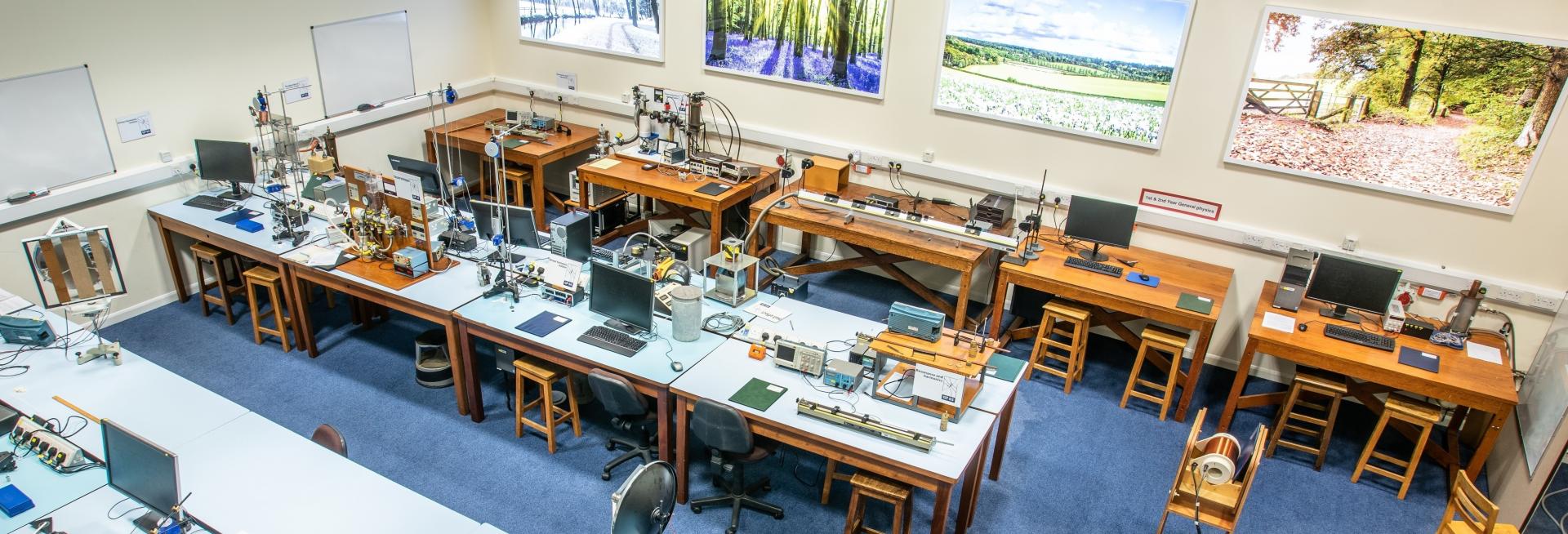In light of switching test provider, the information on this page and other pages referencing the PAT is now out of date and will be updated soon.
Everyone who applies to study physics or physics and philosophy at Oxford, without exception, must take the Physics Aptitude Test (PAT), a two-hour test that evaluates a student’s ability in both physics and maths.
The date of the next PAT will be 22 and 23 October 2025. Registration information for the PAT can be found here.
From 2024, the PAT will be online and delivered via Pearson VUE’s established network of test centres. It remains the case that in 2025 there will be no charge for candidates to register for Oxford's own admissions tests.
What is the PAT?
The PAT is a mixture of both physics and maths questions and you have to complete a lot of questions in only 2 hours. From 2024, all questions will be delivered online and will be multiple choice. Please note that formula sheets, tables and data books are not permitted. A digital calculator will be included as part of the online interface for the PAT from October 2023 onwards. Candidates must use this and may NOT bring their own calculators, of any description, into the exam. There are no recommended text books for the PAT. As well as the information you can find here on the Department of Physics website, there is also information on the University of Oxford website.
How to prepare for the PAT
- Look over a range of past papers to help to familiarise yourself with the level of difficulty of the test and the content covered. We also publish reports for each test; reports contain information such as the average mark on the paper and the mark students needed to achieve an interview. Do not expect to get all of it correct – most years the average is 50-60%.
- Familiarise yourself with the syllabus. The material is aimed at AS level maths and physics plus knowledge of material covered at GCSE. However we cannot guarantee when the material will be covered in your school so you might find you need to teach yourself a few topics before the exam.
- Get practice doing some problem solving/hard physics questions which are not A level questions. It is advisable to do questions from a range of other sources, not just A level type questions which can be more structured in nature than the PAT. See our page on useful websites and resources for the PAT.
- Try doing some questions under timed conditions. One of the things which students who have taken the test say is hard is the number of questions you need to do in only 2 hours. Practising some questions under timed conditions near the date of the exam will mean you are more likely to get to the end of the paper.
- An online sample test in the new multiple-choice format can be found on the Pearson webpage. You can use this to familiarise yourself with the format and to test the online calculator. Older tests will still be useful for understanding the syllabus and level of difficulty, even though the format has changed.
Solutions to papers
We do not generally provide solutions to the past papers; when marking the PAT, all suitable methods for solving the questions are allowed and we would not want you to feel only one specific way of solving the problem will gain you marks. We have however published sample solutions to the 2009 and 2010 papers and our Access team has created unofficial sample solutions for the 2019 paper; these can all be found on the PAT past papers page.
To get the greatest benefit from the past papers, don’t look at the solutions too soon and note that the solution presented is by no means the only or the best way to solve the problem – it is just one possible route.

